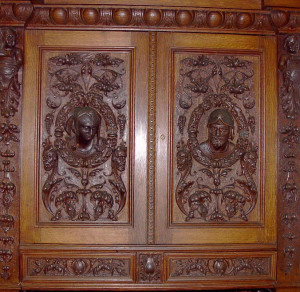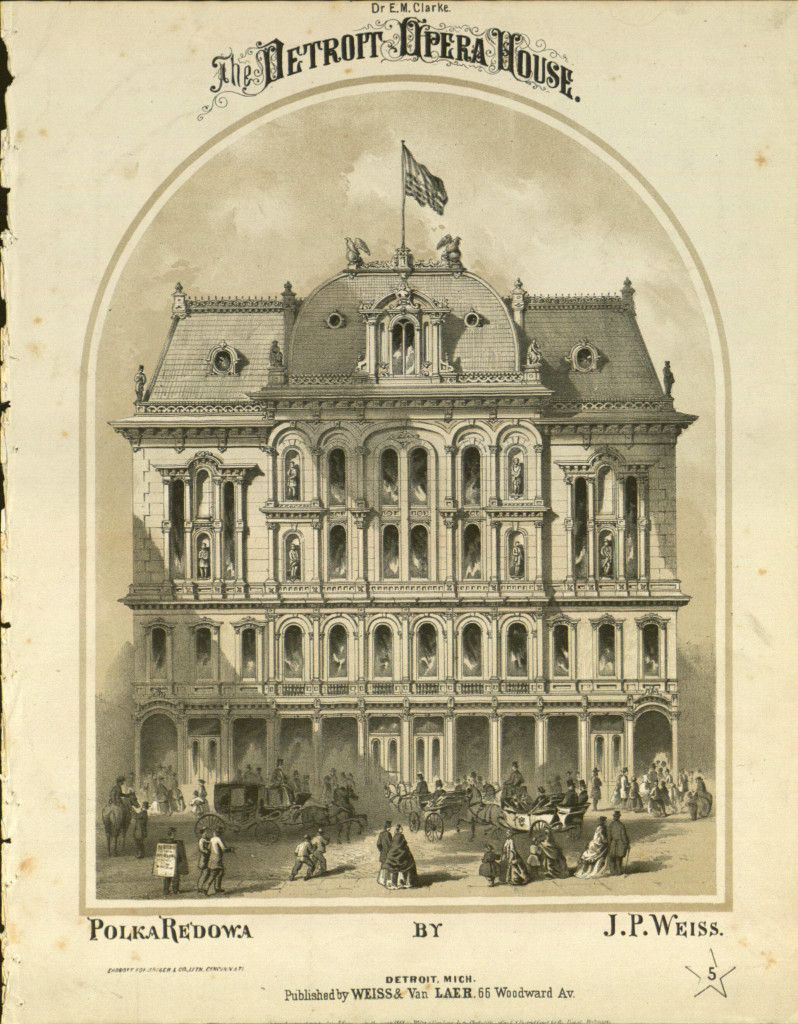Julius Theodore Melchers (1829-1908) was born in Westphalia, Prussia. At age 15, he studied at the Ecole des Beaux Arts. Before immigrating to the U.S. he was a modeler at The Crystal Palace in London and carved figureheads for ships. He could be considered Detroit’s father of architectural ornamentation. In addition, he was city’s first art teacher with over 150 students, including Albert Kahn, Hugo David Phol, and William Sommer. From 1890-1895, Melchers partnered with Henry A. Siebert. During the Gilded Age, he became widely considered one of the finest and most influential carvers of his time. In 1897, he received the AIA Fellows Award. Melchers was one of the founders of The Deutsche Theatre-Verien (1853), president of the Harmonie Society, and was a freemason.
Notable Commissions:
Exterior Stone Sculptures, Detroit Opera House (1869), Mortimer L. Smith, architect
Detroit City Hall (1871), James Anderson, architect
Sculptures of Cadillac, La Salle, Father Marquette and Father Richard, Detroit City Hall (1874)
John N. Bagley Residence (1889), Rogers and MacFarlane, architects
Campau Thompson Residence (1894), Mason & Rice, architects
George Gough Booth Residence (1890), Mason & Rice, architects
Limestone Angels, Trinity Church (1892)Mason & Rice, architects
William Livingstone Residence (1893), Albert Khan, architect
Models for Medallions, Belle Isle Stone Bridge (1894), Mortimer L. Smith & Son, architects
Watson M. Freer Residence (1895), George D. Mason, architect
Melchers Residence (1897), Donaldson & Meier architects

Sideboard

Advertisement, 1877
Leslie S. Edwards, author
